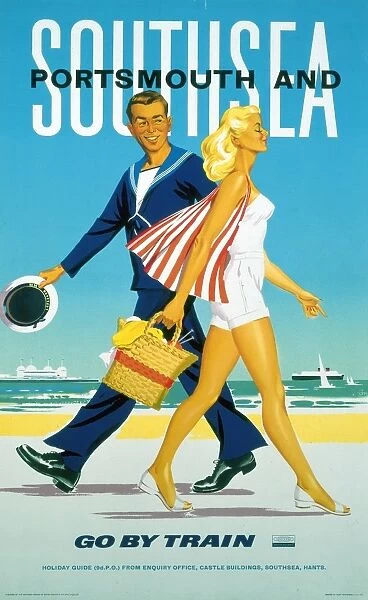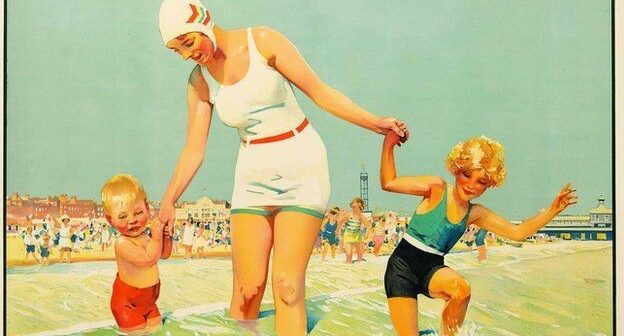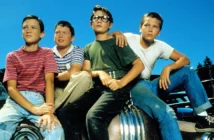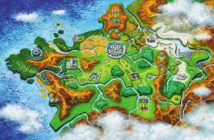How would you attract someone to the beach? How much do you really need to? Surely the idea of a day at the seaside, familiar to many across the UK, sells itself? Just pick a day, figure out where you’re going and pray the weather stays on side. Pack a bag if you’d like to, wing it if not. Independent and chain shops are almost certain to be found framing the waterfront. There is a degree of uniformity when it comes to how the coastal towns and cities of Britain are all arranged – something the Victorians can be credited with. This model, shaped by the expansion of railway networks, introduction of bank holidays and evolving leisure activities across all social classes, ensured that a collective idea of the seaside was held.
The most enduring aesthetic, however, is something we can attribute to the decades following the two World Wars. Both the twenties and thirties, then fifties and sixties saw social change and economic recovery as domestic life changed. Though some similarities can be found in the Victorian and Edwardian experience, mass marketing was not utilised to the same degree and disposable income and leisure time was on a much smaller scale. Then, into the 1970s and beyond, package foreign holidays were becoming the top choice to which the word ‘staycation’ is now used to describe domestic tourism and day trips.

British Railways, 1962
Say what you will about taking the train today but the railways across the UK, including the Isle of Wight, were vital in allowing people of all social classes to visit the seaside. As people became more affluent with greater amounts of disposable income and leisure time, British Railways (the name for the nationalised trainlines across the UK 1948-65) took the opportunity to promote specific areas across the UK. These posters would be placed displayed at the train stations themselves, in the carriages, towns and cities, and in magazines to serve as inspiration for potential holidaymakers (and customers). Though I am not particularly well versed on trainline economics, tourism across the UK can create positive boosts to the economy as a whole. People would be spending money on more than just the travel fare: food and drink; clothes; accommodation; souvenirs; and more would be purchased on both day trips and extended stays. Thus, the then nationalised railways put a lot of effort into effective marketing.

British Railways, 1961
Generalising slightly, the art of the 1920s, 30s, 50s and 60s favoured modernist styles such as art deco, favouring minimalist graphic designs over detailed realist representations. Likewise, the fashion, particularly for women swimming, sunbathing and strolling, became far more practical directly foreshadowing popular ideas of beachwear today. In the 1930s, while women were encouraged to swim as a form of ‘lady-like’ exercise, swimsuits began to take centre stage as fashionable idyllic garments while the sensibilities continued to become more liberal in the 1950s and 1960s as the bikini became increasingly popular.
To this day, most fashion and beachwear tends to have a feminine focus, and from its Victorian working-class roots there always has been a certain degree of bawdiness when it comes to the marketing and aesthetic of a British seaside holiday, thus the amount of vintage marketing posters containing beautiful women as an ideal is unsurprising. Though, in contrast to a ‘kiss-me-quick’ hat or cut-out board, the artwork created by British Railways follows a more subtle tone where the emphasis is on calm enjoyment and relaxation. Charming, picturesque prints with bold colours and smiles indicate that the primary selling point here is the memorable day out with the train providing the key as the primary method of transport.

British Railways Poster, 1952, Via V&A
These posters have a vintage charm to them which is ironically timeless as many of the core ideas are still entrenched into our ideas of summer and the seaside. The importance and enjoyment of family time is still embraced by many, as is the long-awaited-for warm weather and blazing sun. Aspects of the style are still utilised today, through many postcards, gift shop items and the work of contemporary artists, such as Jack Vettriano, thus ensuring that the aesthetic still generates a desire to take a trip to the seaside.
On this note, it is worth stating as an epilogue that by train from Southampton you can travel directly to Brighton, Hythe, Bournemouth, Weymouth and Portsmouth, all of which have beaches.

1939




